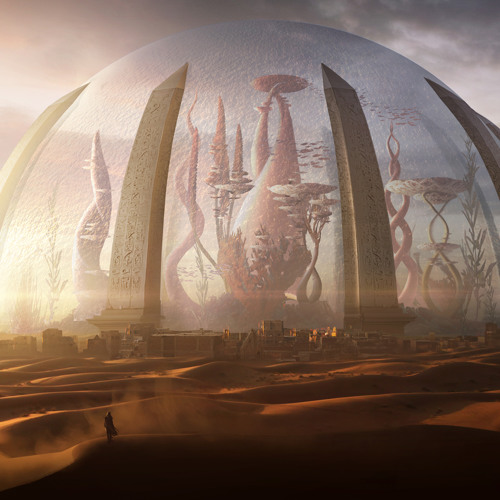The years passed quickly, and the year 2050 arrived, bringing with it a world vastly different from the one we know now. As everyone could guess, humans had made the world uninhabitable. Oxygen levels in the atmosphere were decreasing day by day, and the world struggled with scorching heat. There was no sign of anything tree-like or green; no grass or bushes adorned the barren landscape. Instead, only dry, cracked soil stretched out, a testament to the lack of water, making it seem impossible for plants to thrive. The population gradually decreased due to drought, famine, poverty, and pollution in previous years. Despite these challenges, the human race persisted, establishing new cities with developing technology.
The largest city established was in Anatolia, chosen because it was one of the few places not flooded by global warming. Much like others, this city resembled a closed glass bell, as the oxygenated air inside was invaluable. Despite everything, it lacked the familiar green color. Oxygen production no longer relied on plants but on billions of tiny microorganisms housed in small boxes scattered throughout the city. It was a monumental task for these organisms to provide enough oxygen for the entire world, leading to the use of spheres. The bottom of the glass bowl resembled old cities, but all the buildings soared skyward to save space. The sphere appeared much more vibrant compared to the colorless nature outside.
There was no agriculture left in the world; all foods and fruits were produced in underground laboratories, where most people spent their lives working. Thanks to robots, life has become much easier. Even the healthcare industry fell into the hands of robots. Although this brought many dangers, humans had grown accustomed to this comfort and had no plans to abandon robots. Even education was taking place on big screens. For this reason, drugs against radiation began to be produced. Despite eye diseases, the number of synthetic eye transplant surgeries increased day by day, and this was considered very normal among people.
There was not a single trace of animals left in the world. One by one, humans had made them all extinct. Only in the depths of the oceans were new types of microorganisms formed.
Even if people ended the world, they still continued to live. However, there was a very strong possibility that humans would disappear from the world in the near future and everyone was aware of this.

